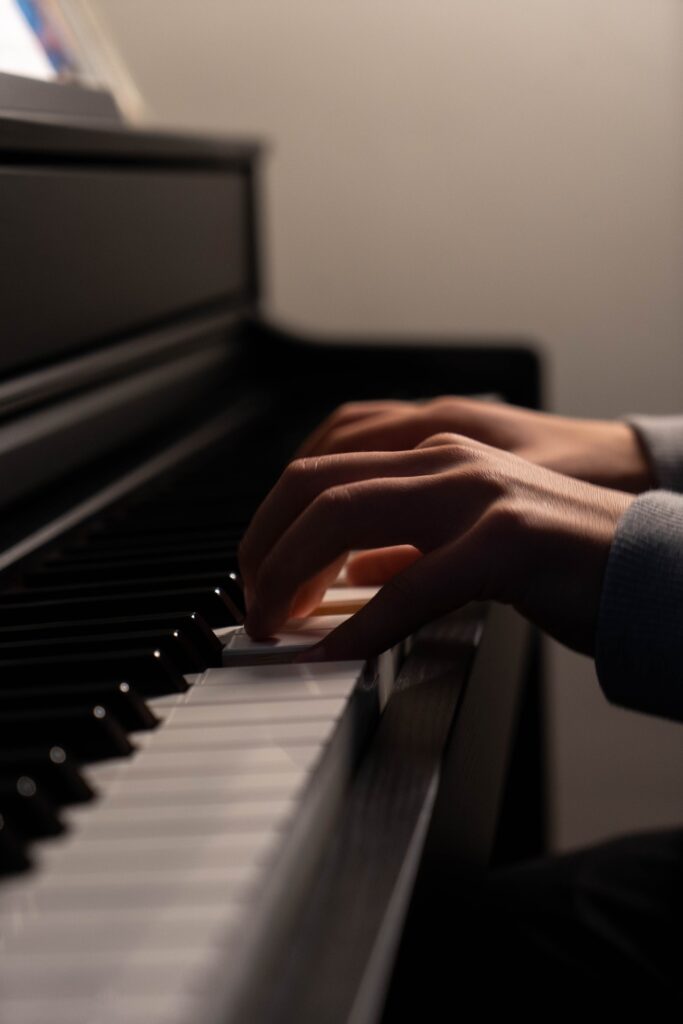Uncategorized
Vicente Scaramuzza Piano Technique
Vicente Scaramuzza Piano Technique
We have to sit in front of the piano so our chest faces E3.
We need to sit straight but loose, with our heads up and approaching the keyboard so our hands hang free until they reach the surface of the keys. We will allocate all fingers within the area of the keyboard; meaning fingers 2, 3, 4 and 5 will be closer to the wooden bar than to the edge of the keys. We will align all our fingers with the keys so they look as their continuation. We will curve them so they exhibit a 160 degree angle from the middle phalanges to the fingertip. We will always play with the wider section of our fingertip keeping as much contact surface as possible with the keys.
Thumb—
The thumb should be just a bit flexed so it looks the same as the other fingers. It will attack by touching the keys with its side. It has to cope with all the weight of the arm and it should build an oval in conjunction with the little finger.
When the thumb actions in the aforementioned way we achieve the most confident touch, one which allows us to rely on this finger as we can fully sense the key -in the same way we do with the other ones.
In spite of the fact the thumb is obviously not touching the keys using the same amount of sensitive tissue as the other fingers, if used in this way, it will articulate “normally”, what means it will be easier for us to achieve a relaxed hand position.
Arms—
Our forearms should be placed at a height slightly below the one our hands are standing on. This allows all the weight of our arms to concentrate on our elbows. If we achieve this position then the fingers in their curved position will be able to both: keep the hand inside the keyboard and also cope with the weight of our arms. The flexor muscles will be the stars of this game enabling the entire mechanism to function in perfect equilibrium of tension and relaxation. The weight of the arms is the energy channelled by our fingers through assertive targeting. In this way we have access to a gracile and unlimited source of mechanic energy.
The knuckles are always aligned and slightly elevated as a reflexion of the action of the extensors. If the hand is always taken care of and never left unattended then we will be giving full freedom to our fingers to act efficiently.
The curve of the hand is what keeps this system operating smoothly. The fingers will only be able to act efficiently if their action is collaborative, meaning, if they help each other by taking advantage of the hand anatomy and the way in which they are naturally entangled.
As teachers we need to pay special attention to how the students understand how to action energetically and if they don’t automatically stat to push with their forearm when required to do so.
Learn our round-up on this technique with our new article!
#Scaramuzza

